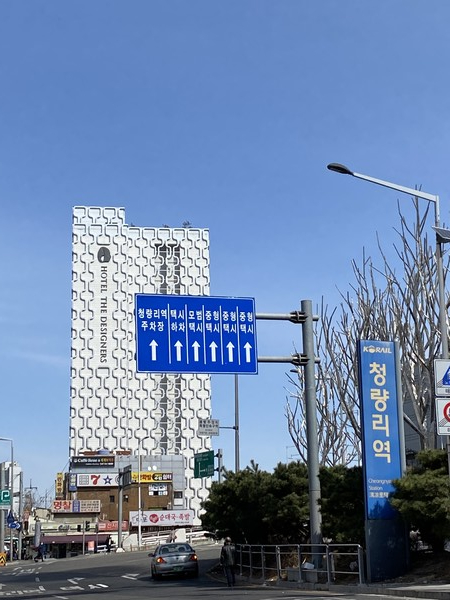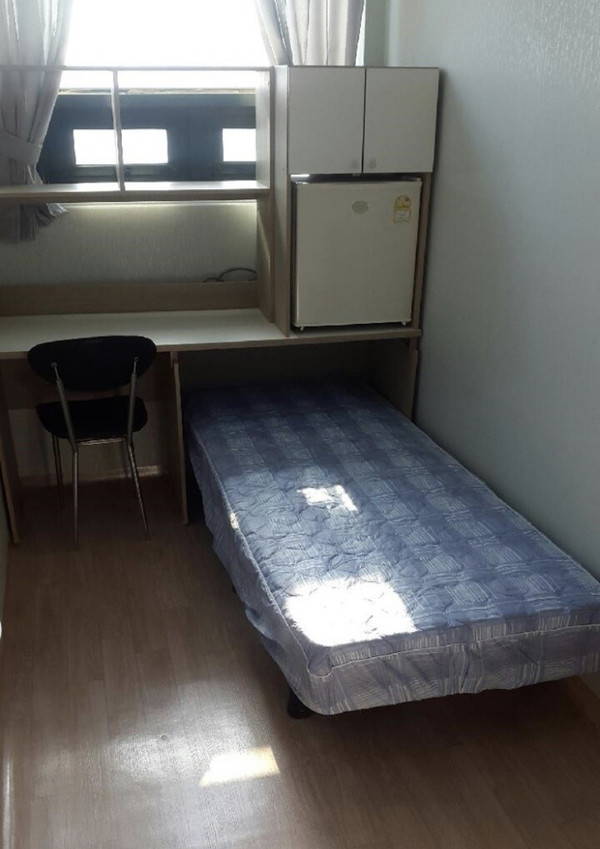University of Seoul (UOS) has turned its dormitory into a life care center for COVID-19 patients to help the government with quarantine. The day this transition was decided upon, 1,014 confirmed cases were reported, with 1,000 confirmed cases daily. Local governments had to secure beds to meet the demands. The students understood the urgency of the situation and tried to cooperate with the school’s demands. Therefore, UOS also made utmost efforts to minimize inconvenience for students leaving the dormitory. The school has come up with a countermeasure aimed at providing alternative accommodation. The school provided transportation and bore its costs for dormitory students to go back home, ensuring they have stable housing at the earliest.
However, the students were also embarrassed by the school’s sudden actions. They had to leave the dormitory on such short notice that it felt like coercion. There was only about a week from the date of the decision to the deadline for student discharge. Moreover, the official notification of UOS was slower than the news broadcast. It was also difficult for students settled in dormitories to move out alone because they usually had no experience of living in other forms of residence. The schedule of the vacation, which was based on the geographical advantage of the dormitory, was completely ruined. Dormitory students who returned to their homes for a while to rest after the exam period faced the inconvenience of having to return to the dormitory to move their belongings. Clearly, there was no consultation regarding when to move out. The school acknowledged this, so the school officials continued to visit alternative accommodations to check students’ status. However, it was difficult for the students to adapt.
The school tried to support students who came out of the dormitory through alternative accommodations. Consequently, 240 people lived in four alternative accommodations during their stay. At the time of the transition, 290 out of 560 students living in dormitories returned home or made other living arrangements. Many did not prefer alternative accommodations for two reasons. First, some alternative accommodations were located at a considerable distance from the school, and the farthest accommodation was in Jung-gu. Second, many students were dissatisfied with the sudden change of roommates. Therefore, many students who originally used dormitories did not choose the alternative accommodation. The student who lived in the alternative accommodation told The UOS Times about it.
<Alternative Accommodations>

Jang originally lived in a school dormitory. However, due to the sudden decision of the school, she opted for the alternative accommodation provided by the school. There were three types of hotels, each located in Cheongryangni, Dongdaemun, and Myeong-dong. International students could stay at a hotel located in Myeong-dong, and the other two were assigned to Korean students. At first, when she left the dormitory, she felt unpleasant because there was no prior notice. Consequently, she was able to live in better accommodation with low dormitory costs. It was better than the dormitory in terms of hygiene because the staff stayed and disinfected the premises daily. The disadvantage was its distance from the school, which made the commute expensive. She had to attend school thrice a week because of her on-campus work, but since the distance between the alternative accommodation and the school took about 30 minutes to cover by public transportation, she spent nearly 50,000 KRW to 60,000 KRW per week. Except for such commute-related problems, she and the other students were generally satisfied since she had always hoped to stay at such a hotel.
Jang So-eun (Dept. of International Relations, 19’)
Improper operation of the Dormitory Student Committee worsened the situation to this extent. A student working in the Dormitory Student Committee claimed that the meetings were infrequent. The consensus among students was difficult to attain because they followed different schedules. Since the committee usually does not function properly, the school considered follow-up measures after notification rather than coordinating opinions regarding the period of departure or alternative accommodations with the committee. There seems to be a need to change the way students gather their opinions. With the disappearance of the dormitory, the residential culture of UOS students became more diverse during the vacation. It was not easy for those who had not planned on how to live outside the dormitories. Additionally, the first semester’s dormitory recruitment was completed, but they had to be aware of various types of housing because of their possibility of switching dormitories for the need of beds in the future. Therefore, The UOS Times decided to share other students’ experiences.
How were the students living out of the dormitory?
- Go Si-won (Accommodations for students studying for exams, in English)
Student A chose Go Si-won, located at the main gate of UOS. She was from the region. Hence, she could live in Seoul in a school dormitory. However, due to the sudden decision, she had to move out of the dormitory and find a place to live in Seoul unexpectedly. Although the school provided alternative accommodations, she did not choose the same because of the distance from the school. She booked a room over a phone call in a day. It was a great choice for her because she was in a hurry. The advantage of the Go si-won is that it is inexpensive because there is no real estate agent commission involved or a deposit. Additionally, unlike dormitories, students here are free from curfews. Despite the narrow rooms and poor cooking and washing facilities, due to the advantages and convenient distance from school, she has been living here for two months.
Student A

- Hak-sa (Dormitories for students in certain regions, in English)
This case was slightly different. Hak-sa is often associated with a scholarship foundation. The same goes for the hak-sa, where she is staying, and the application method entails preparing the documents and submitting them to the city hall when the notice is posted on the website of the scholarship foundation. Students from cities belonging to the office of education in charge of hak-sa met the selection criteria. As student B graduated from high school in Gimje, Korea, she was eligible for Gimje Horizon hak-sa. She found it convenient because hak-sa is very close to UOS and the biggest advantage is the ability to live in Seoul at a low price of 180,000 KRW a month. Furthermore, scholarships are also provided by scholarship foundations every semester. These scholarships can be received until graduation from the university if requisite grades are maintained. However, there are some disadvantages. Commuting to school is difficult because most hak-sa are far from the university. Further, strict discipline and curfews make many students uncomfortable.
Student B (School of Cross-disciplinary Studies, 20’)

-Renting a Room
Yoon left the dormitory before it was converted to a life care center. She felt that the environment in the dormitory was unsuitable for her. Fortunately, Yoon benefited from the policy while continuing to find another living environment. She rented a room using the Korean Land and Housing Corporation (LH) system. Currently, LH purchases existing houses and supplies them at prices lower than the market price to solve the housing problems of young people. These LH houses are sold according to the applicant’s income level. Since these houses are recruited from time to time, she frequently went to the LH website to check for announcements. When she found a suitable one, she opted for an Internet subscription. She has been living in a house she found using LH for six months and found several advantages of doing so. It is much cheaper to get a house using LH compared to ordinary real estate. The former includes no real estate agent’s commission, and the monthly rent is about 40 percent of the market price. Additionally, there are rooms with a variety of structures, such as attic-style rooms, which are difficult to find around universities. It is impossible to live in such an attic-style house at a low price of 300,000 KRW a month without using the LH system. These LH houses can be renewed for up to two years and resided in for up to six years. She said she would live for up to six years, if possible. If one maintains the requisite qualification, an LH house can be renewed thrice every two years. Thus, one can live in it for up to six years.
Yoon So-hyun (Dept. of International Relations, 20’)
Although the students have returned to their dormitories from the alternative accommodations, anxiety persists as large-scale outbreaks of COVID-19 continue. Given the circumstances, dormitory students explored various forms of housing and settlement. This unexpected situation led students, who usually suffered from low accommodation rates in their dormitories, to find a new house. Surprisingly, some students continued living there even after the migration period because of the inherent advantages of these forms of housing. The students now have more diverse options. Nevertheless, the overall environment of dormitories needs improvement.
However, The UOS Times has found many positive aspects in the course of its coverage. This is because some students gauged the inevitable situation in schools caused by COVID-19 even before the dormitory was converted. As a result of this phenomenon, students hope that the dormitory will be improved by establishing a system wherein students’ opinions can be expressed efficiently. If students’ opinions are well gathered, it will be easier to receive their cooperation even if something similar to this incident occurs again. Many students believe that dormitories should be able to accommodate students’ complaints and accept the advantages of the various ways of living.

